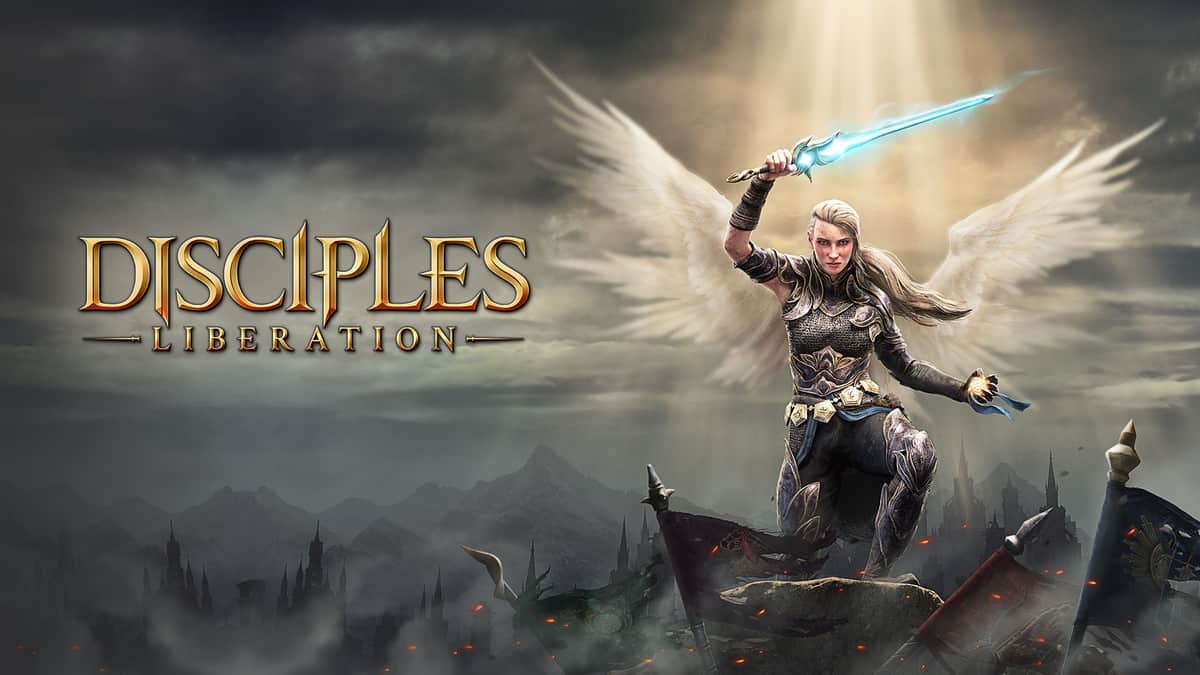Where do I start? I have played a handful of RPG games where it is claimed that the player’s choice, in dictating the conclusion of a game, matters. Perhaps they have fulfilled that promise allowing you to experience the consequence of your choice in the backseat of your character’s mind. They lift a sword, so have you. They steal a life, it is because of you. A select few games have made me question my morals like Disciples: Liberation has.
Upon starting a new game you are introduced to your protagonist, Avyanna. I won’t lie that I was a tad bit disappointed when I couldn’t create my character like Divinity, Dragon Age or Dragon’s Dogma.
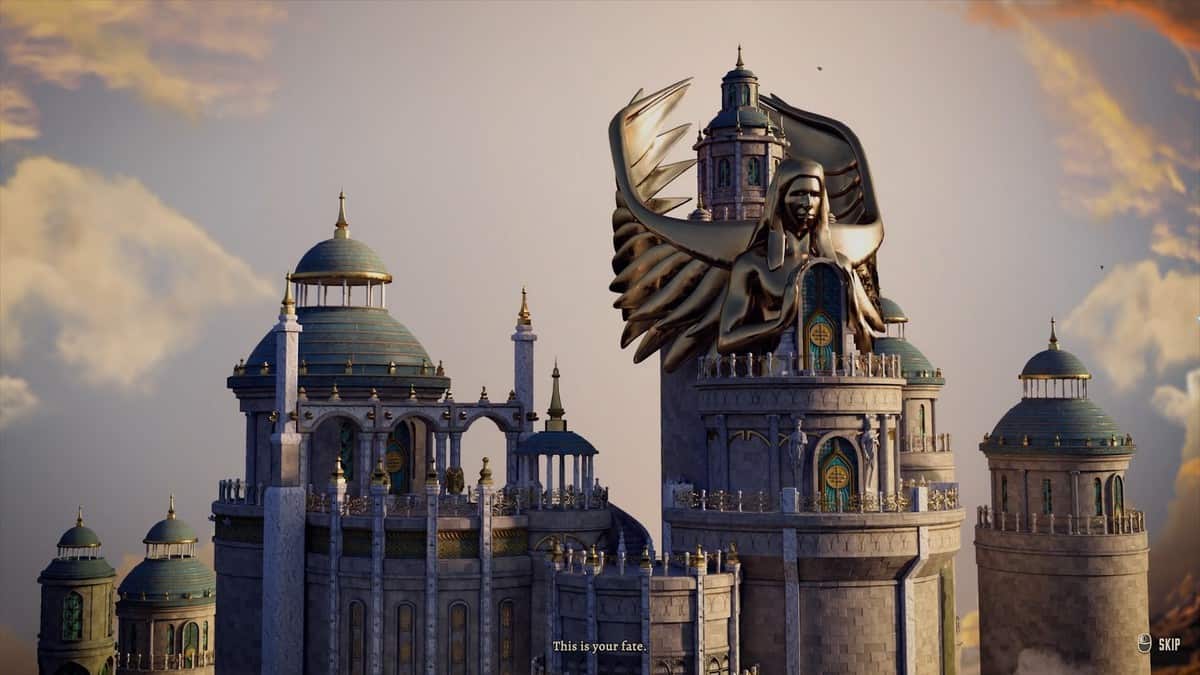
The story starts rather abruptly with an assassination gone wrong of an important cleric of the Church of the Highfather located within the Empire. But that sentiment was quickly extinguished when I witnessed the introductory arc of the story.
Our mercenary protagonist managed to open a portal to an unknown realm in the sky. Avyanna felt that it was her duty, or if not in her blood, to repopulate the ancient city that she calls ‘Yllian’. For a while, I sat there thinking that the characters would address the elephant in the room.
How did Avyanna gain that power? Did she know that she was a descendant of an ancient race? Why did she seem so aloof, if not, sarcastic to her display of power? Why does she suddenly feel obligated to revive Yllian?
Most importantly. Why is it that the two best friends wanted to drink ale in this ancient city that they accidentally spawned in? Albeit the more confused I got, the more I pushed myself to play the game and uncover the history behind Avyanna.
I have enjoyed this game to the point where I wished to explore every nook and cranny of its world. My choices, though black and white ended up washing the world grey as sometimes chaos would ensue in order to guarantee harmony.
It’s rare that I create extra save files for a game because I never want to look back on the decision I have made. Partly for the sake of immersion but I can’t lie to myself when I say that I get peeved when I see my load order in a messy state. But I was flabbergasted when I made my first, questionable, choice in this game.
Because of my decision, an innocent elf who was merely fulfilling their role as a guardsman had killed a trespasser who happened to be a child. This elf was murdered by my hands, who in the end, was just doing their job.
The father who had lost a child asked for revenge, the elf asked for respect from the people who walked on their sacred lands. Either way, I had to choose between a very difficult choice. Suddenly this world felt real and the sentiments of the affected mattered.
Regardless, the ever dauntless Avyanna persevered with her bellowing voice saying ‘Act now. Regret Later.’
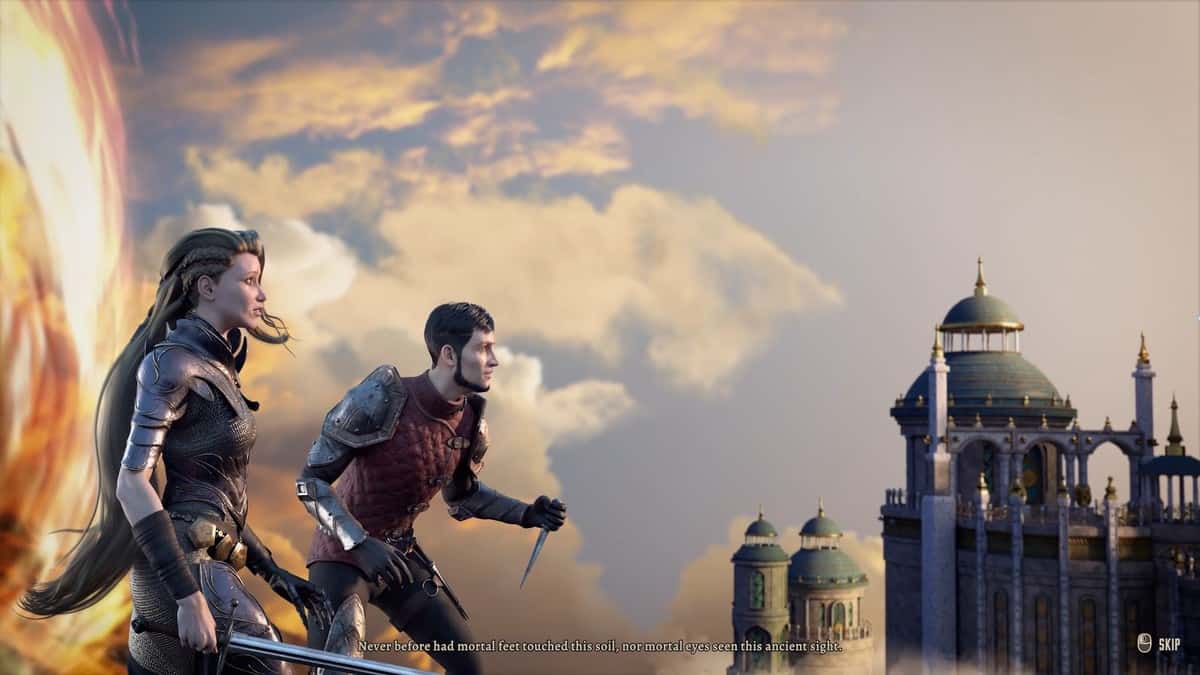
Thus the real story of Disciples: Liberations begins where Avyanna meets allies, lovers and enemies from the four factions spread across Nevendaar. And I couldn’t help but marvel at the personality of the character whom I was in control of. Sometimes vise versa because I couldn’t help but think ‘What would Avyanna do?’
Heurik where the Legion of the Damned belongs. The Whitelands where dwarves once ruled, now belongs to the Elven Alliance. Grayleaf is home to the necromancers that command the Undead Hordes and the Plains of Widows belong to the Empire.
Expect affinity with each faction to be a key feature as you attempt to mark your presence within Nevendarr. You can propagate the fracture occurring within the lands or become the balm that would heal the lands. Though the premise of the game is very cliche, I can’t help but appreciate the simplicity of it.
Especially when the game offers complexity through the hands of its NPCs who always end up surprising me either through their dialogues or the quests that hold so much depth in them.
Speaking of NPCs, as Avyanna’s journey continues, she will meet certain individuals who would want to be a part of her Army and Empire. These companions can be recruited from the different regions available in Nevendar. Therefore each represents their own faction: Bagthal represents the Legion of the Damned, Princess Ormerial represents the Elven Alliance, Ejamar is connected with the Undead Hordes and finally, Corisandre is affiliated with the Empire.
What makes these companions unique is that they have free will in some sense. Mind you, not a lot of RPG titles have their companions starting relationships with each other. Unfortunately, the only times you may see these interactions is through text. Whenever I would return to Yllian, I always made sure to speak to my companions to see if any new interactions had been triggered. I, for one, don’t mind the literary nature of the interactions.
In one instance I had caught Bagthal expressing his interest in Corisandre. As Avyanna, I encouraged Bagthal to pursue Corisandre. This resulted in an awkward exchange of gifts that included dead creatures and a love note. Though the humble woman was charmed, I allowed the two to pursue their relationship.
I was shocked by how human the two seemed at that moment. It’s safe to say that the companions respect Avyanna’s word a lot. If you want to pursue a relationship with any of the companions, or all of them, you are free to do so. Of Course, you can also nip the feeling from the bud.
I cannot stress enough the following point when playing Disciples: Liberation; “Your words are the greatest weapon against all factions.”

It’s somewhat similar to Undertale where sometimes talking can solve all problems but in the end, some people don’t want to change and would prefer the bite of the sword. Speak the truth, be blunt, evil, lustful, or lie- there are many ways to acquire what you want. But doesn’t it get tiring when half of the game is just conversation after conversation? Not really.
Everything is concise but at the same time, filled with quality. The NPC’s have little to say but what they utter is filled with emotion almost like theater. This shines through when the majority of the dialogues are voice acted by professionals.
But there are instances where the voice lines feel jarring to the ears. Especially during the turn-based battles where the allies and enemies have a few repetitive lines. You can’t believe how many times I have heard “You are all Maggots.” over and over again before I wasn’t laughing anymore.
This brings us to the meat of Disciples: Liberation, combat. This game is deeply rooted in tactical, turn-based combat with a heavy emphasis on the placement of the characters on a hex-based grid. It’s like playing chess where whoever nabs the flanking position wins with the added visual stimulant of fancy particle effects.
Now the layout of each arena may become redundant after a few battles but it became tolerable with the addition of terrain features that healed or debuffed anyone who walked over them.
Then the nature of the AI also kept me on my toes. They would not hesitate in positioning themselves to flank my unit. Flanking is when two characters are sandwiching an opponent between them which can work in an ‘X placement, diagonal or horizontal position. Attacking after arranging your characters in this position will significantly raise your damage output. When this tactic is combined with the terrain features, no battle was ever the same.
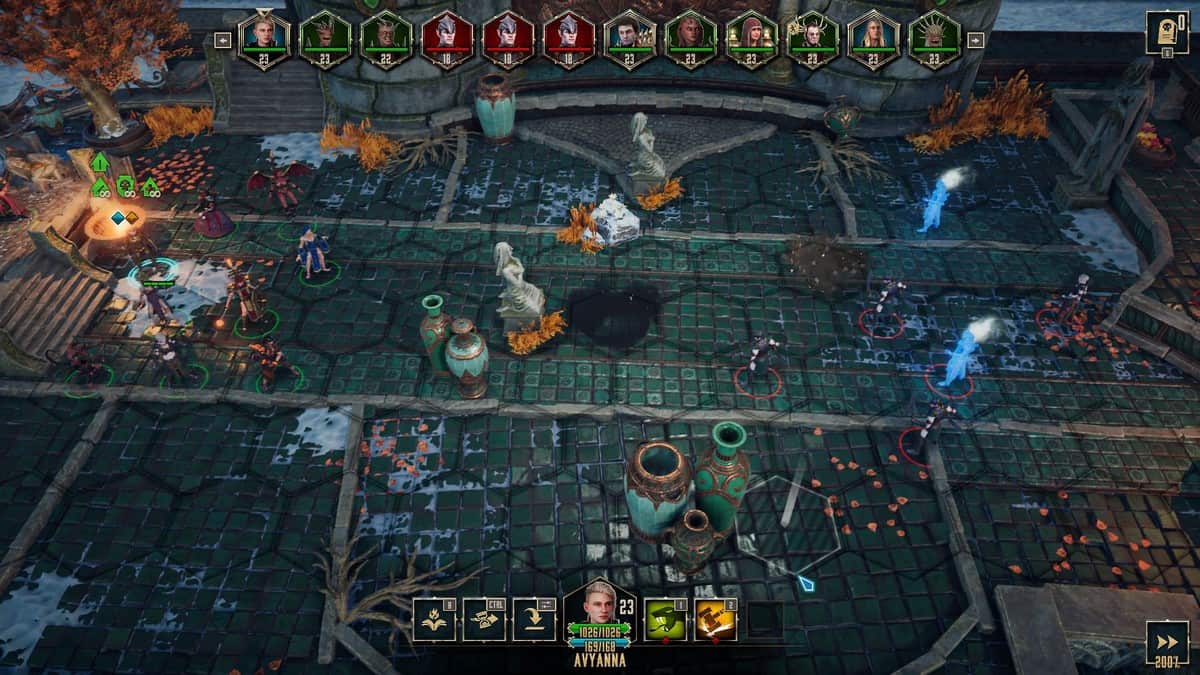
Additionally, Disciples: Liberation offers the mechanic of backline buffs. When you are creating your unit, there is a separate column for backline members. The role of backliners is to grant individually unique buffs to the entire team or debuffs for the enemy at the start of the battle.
Then there was a feature called the Graveyard. Every time a unit died, they would be sent to the Graveyard. By pressing the tiny icon on the upper right corner of the screen during battles, a window would pop up. It would display all the units that had died during the battle. Through the help of Corrisandre, I could revive and call back my characters to the field.
Talking about battles, the rounds during combat revolve around individual turns amongst the unit. The order of it is based on the initiative score and each unit has a total of 2 turns where they can move or attack.
The UI color codes for the type of attack you can do are designated as the following: Red, blue or yellow. Red is an indicator for attacks or skills, blue indicates that your unit can move during this turn and in yellow the combatant can do whatever they wish. You can also delay or skip the turn thus gaining a buff where 10% of your unit’s health and mana is replenished.
It didn’t take me much time to learn all of this since it’s pretty reminiscent of D & D and its combat but what I struggled with was how to build my Units.
There is a separate tab for Unit which is displayed when you press the ESC key. It will display your current team set-up and those in the backline column. It’s best that you organize your army according to the region you visit. Each and every footsoldier (or unit as they are designated) have their own role in your loadout. Healer, Archer, Tank, Mage and Infantry etc.
You have to respect each role and understand their skills along with resistance to gain an upper hand during a battle. Just like how Bagthal can be considered as a Tank, Ormerial as the Warrior, Orion as the Rogue, Ejamar as the Mage and Corisandre as the Healer.
Since you are limited to 2 companions in your loadout, the rest must be filled with your foot soldiers. Therefore your army can be composed of people from all factions, you can mix and match your soldiers in respect to their abilities and passives.
In this case, Avyanna is special though since she has access to every faction’s spell along with extra inventory slots. Therefore, as the leader of an upcoming nation, it is your duty to harmonize the weaknesses of your army and equip them with shards that better suit their role in battle.
Despite all this, if your protagonist dies, the battle will continue. Usually, the battle ends if the main character dies but in Disciples: Liberation the fight will be carried on through the army you have crafted. Although afterward, you may have to find health and mana points on the map to fully replenish Avyanna and her platoon’s strength.
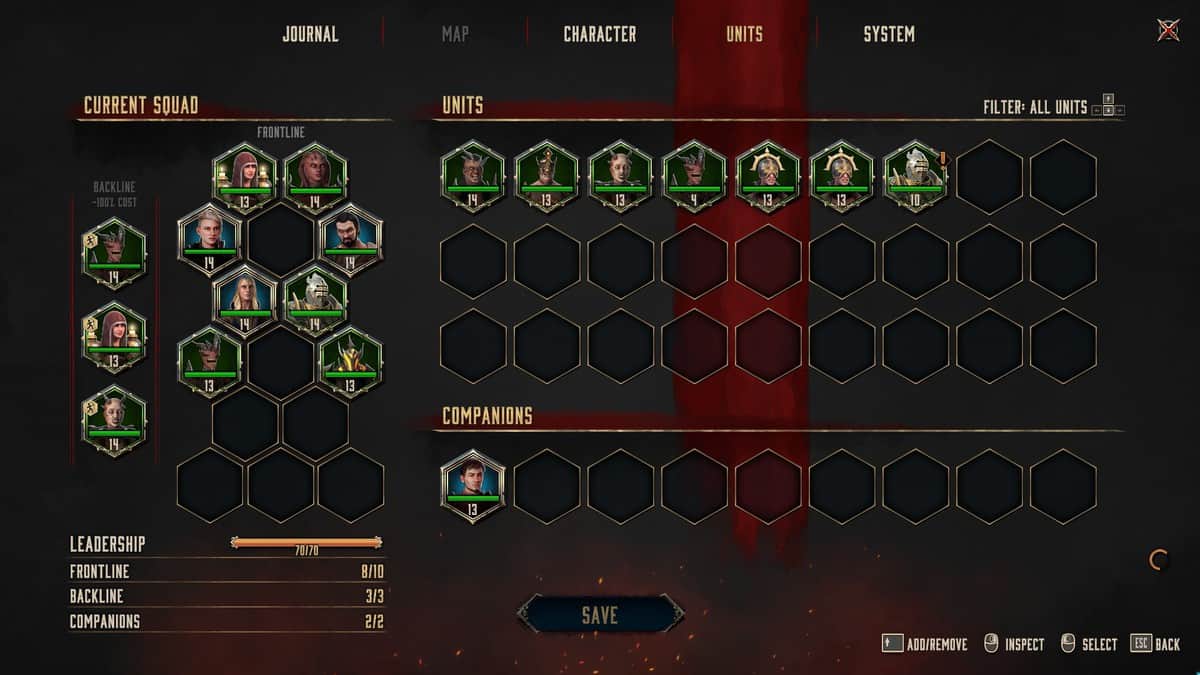
Another neat thing when it comes to encountering enemies is that you can either choose to retreat or conquer!
The Retreat option is rather self-explanatory, you run away from the battle if your army is outmatched but if you are high level enough, you can skip the entire battle and conquer the enemy thus reaping the rewards in an instant.
But one little feature I wish I had was a quick load button. In the middle of a losing battle, I kept launching the options screen in hopes to find the ‘Load’ button only to find no such feature to my surprise. I made it a habit to save the game before an important event. In the case of my untimely death, I would have to manually load the game by quitting to the main menu thus loading my previous quicksave file from there.
With all this talk about units, footsoldiers, where do you exactly recruit them from?
Yllian is the ancient city in the sky and Avyanna, whose moniker is the child of Iron & Sky, represents this barren city. Similar to Age of Empires or Command and Conquer: Red Alert series, this city is for yours to build upon. Yllian has tiers from 1 to 4. You, of course, start out with 1 and as you obtain more resources and blueprints during your travels, can upgrade your city to the maximum tier 4. And what can you do here? Well, everything!
You come here to obtain story quests, talk to companions, train and recruit units. Learn spells for Avyanna, visit the blacksmith, buy some resources from the marketplace and more!
Upgrading everything is slow since as you climb the tiers, the demand for progressing further gets heftier. No wonder since, if you are like me and offer wayward denizens of Nevendarr refuge in your city, you probably have a lot of mouths to feed. The grind is barely noticeable. On my travels, I make it a habit to capture points like quarries, mines etc on the map to attain resources for my Homebase.
Talking about resources, the world of Disciples: Liberation is bountiful when it comes to exploration. Exploration is done in a point and click style of movement. The WASD keys control the camera allowing you to have a better overview of the area where you are in.
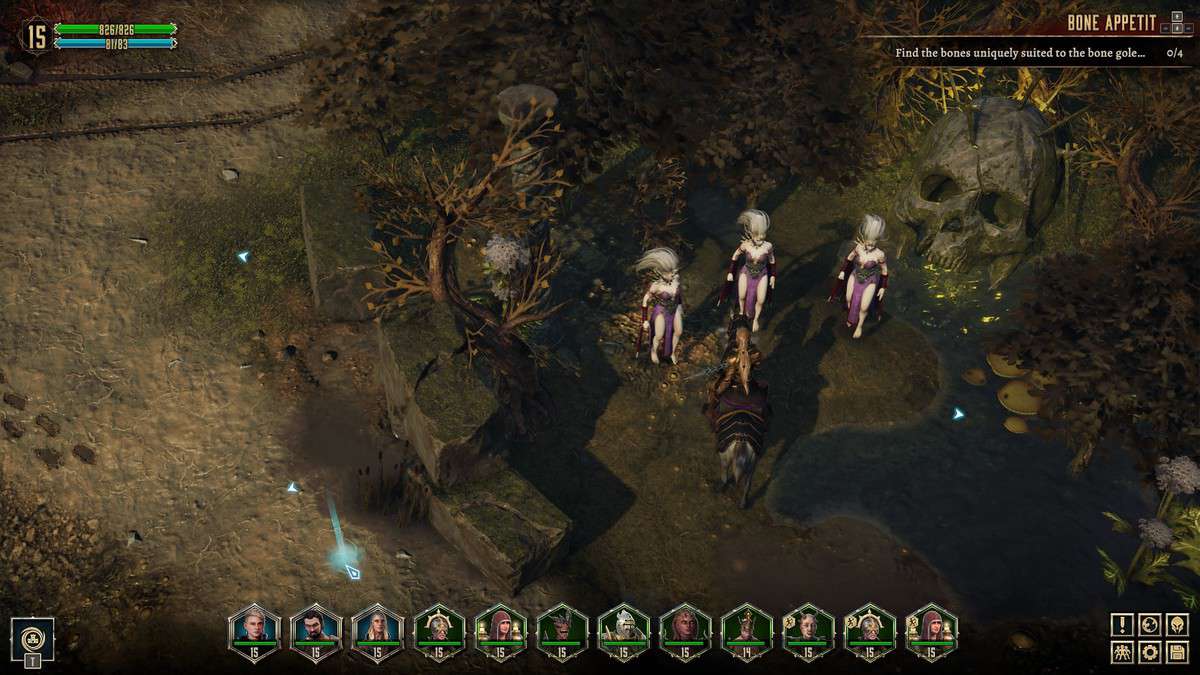
It definitely felt more easy and rewarding than most role-playing games especially when Avyanna is granted a horse from the beginning. Be wary though since each faction’s land has its own difficulty that you can choose from.
I dove headfirst into the elven territory after completing the area for the Legion of the Damned. Because of that, I had to go back to Yllian so that I may pick an area better suited to my level from the map. That being said, the map of the area, where you choose to explore, is small. Regardless, it is filled to the brim with battles, quests and secrets.
They also include interesting obstacles that can range from thorny vines, ice walls or corruption etc. Usually, these obstructions require ‘World Spells’ that can only be gained by our trusty companions after they pass through a certain threshold in their personal questline. Not only did the inclusion of ‘World Spells’ give you a reason to come back to certain regions but it would open up new areas or treasures for you to obtain.
That being said it’s rather refreshing since a lot of games emphasize on large worlds that sometimes feel lifeless and if not, mind-numbing when following a questline. A lot of the side quests greatly emphasized the lore of each homeland. Though the majority of the quests revolved around fetching objects for the NPCs. Innocent enough right?
Alas, these quests generally ended with some sort of anguish. For example in Heurik, I was tasked by a pot-bellied demon to hunt ‘meat’ for him. Little did I know that the quest marker took me to a refugee of lowly imps that wanted to escape him. I heard their story and they told me of the brutal history of Heurik and its customs.
Once again I was sitting there thinking whether I wanted to comply with the culture of another nation or do the right thing. Even if it meant gaining notoriety by the same people I wanted to befriend, I allowed the imps to gain safe access to Yllian. Quests like those were never-ending thus giving the story of Disciples: Liberation more depth than a lot of titles.
Overall, I’d say that playing Disciples: Liberation felt like I was playing something familiar but in a new, exciting light. The freedom with building your own nation, the fame system, the exploration, the combat, and, my personal favorite, the storytelling was satisfying and enjoyable. As a lover of dark fantasy and macabre titles, this game provided me with the flavor I was longing for.
